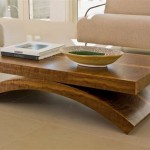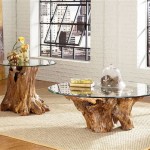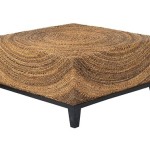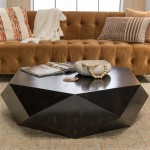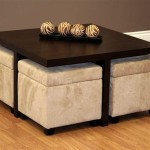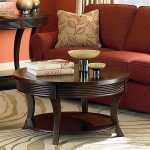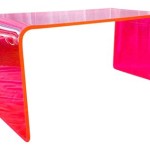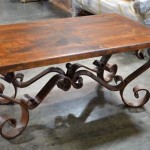Modern Centre Table Design For Drawing Room
The centre table, often referred to as a coffee table, is a pivotal element within the drawing room’s design. It serves not only as a functional surface for beverages, books, and decorative items, but also as a visual anchor, contributing significantly to the overall aesthetic and flow of the space. Modern centre table designs are characterized by their clean lines, innovative materials, and adaptability to various interior design styles. This article will explore the key trends in modern centre table design for drawing rooms, focusing on form, materials, and functionality, while analyzing their impact on the overall ambience of the living space.
The evolution of centre tables reflects the changing trends in interior design, moving away from ornate and heavily carved pieces towards simpler, more streamlined forms. Modern design emphasizes functionality and minimalism, celebrating the beauty of raw materials and intelligent construction. This shift has led to a diverse range of options, catering to specific needs and tastes.
Form and Structure: Simplicity and Geometry
Modern centre table designs often embrace geometric shapes and minimalist structures. Circular, square, rectangular, and oval tables are prevalent, each offering distinct advantages in terms of space utilization and visual impact. A circular table, for example, can create a softer, more inviting atmosphere, promoting conversation and ease of movement around the room. Square or rectangular tables, on the other hand, offer a more structured and formal feel, often complementing angular furniture arrangements. The choice of shape should be dictated by the room's dimensions, the existing furniture arrangement, and the desired style.
Beyond simple geometric forms, more complex and sculptural designs are also gaining popularity. These tables function as art pieces, adding a unique character to the drawing room. They might feature asymmetrical shapes, interwoven elements, or cantilevered structures, defying traditional notions of what a centre table should be. Such designs are often best suited for minimalist interiors, where they can stand out as focal points.
Another important consideration is the table's height. A modern centre table typically sits at the same height as or slightly lower than the seating in the drawing room. This allows for easy access to drinks and snacks without requiring guests to strain or reach awkwardly. The ideal height can be determined by measuring the seat height of the sofas and armchairs and choosing a table that is approximately the same height or slightly lower by a few inches.
Leg design is also a crucial element of the overall aesthetic. Metal legs in geometric shapes, such as hairpin legs or A-frame legs, are commonly used in modern designs. These legs provide a clean and minimalist look while also offering stability and support. Wooden legs, often tapered or splayed, can add a touch of warmth and natural texture to the table. The choice of leg design should complement the overall style of the furniture and the flooring in the drawing room.
Material Selection: Sustainability and Texture
The materials used in a modern centre table significantly influence its appearance, durability, and environmental impact. Common materials include wood, glass, metal, and stone, each offering unique characteristics.
Wood is a classic choice, providing warmth, natural beauty, and versatility. Solid wood tables are highly durable and can last for generations. Engineered wood, such as plywood or MDF, is a more affordable option that can be finished with veneers or laminates to mimic the appearance of solid wood. Sustainably sourced wood is increasingly important, reflecting a growing awareness of environmental responsibility. Look for certifications such as FSC (Forest Stewardship Council) to ensure that the wood has been harvested responsibly.
Glass tabletops offer a sleek and modern look, creating a sense of lightness and transparency. Tempered glass is a durable and safe option for centre tables, as it is resistant to breakage and shatters into small, harmless pieces if broken. Glass tabletops can be combined with metal or wooden frames to create visually striking designs. However, glass can be prone to fingerprints and scratches, and requires regular cleaning.
Metal frames and legs, typically made of steel or aluminum, are frequently used in modern centre table designs. Metal offers strength, durability, and a clean, industrial aesthetic. Powder-coated finishes provide a wide range of color options and protect the metal from rust and scratches. Metal can be combined with wood or glass to create a contrasting and visually interesting design.
Stone tabletops, such as marble, granite, or slate, add a touch of luxury and sophistication to the drawing room. Stone is highly durable and resistant to heat and scratches, making it a practical choice for a centre table. However, stone can be heavy and expensive, and it may require specialized cleaning and maintenance. Concrete is another emerging material, offering a raw, industrial aesthetic. Concrete tables can be cast into various shapes and sizes, providing a unique and contemporary look.
The combination of different materials can create visually dynamic and interesting centre table designs. For example, a wooden tabletop with metal legs can create a balance between warmth and industrial chic. A glass tabletop with a stone base can offer a combination of lightness and solidity. Experimenting with different material combinations allows for the creation of unique and personalized centre table designs.
Functionality and Storage: Practicality and Organization
While aesthetics are important, the functionality of a centre table should not be overlooked. A well-designed centre table should provide ample surface area for drinks, books, and decorative items while also offering practical storage solutions.
Tables with built-in shelves or drawers offer valuable storage space for magazines, remote controls, and other items that tend to clutter the drawing room. Shelves can be open or concealed behind doors or drawers, depending on the desired aesthetic. Drawers are particularly useful for storing small items that you want to keep out of sight. Some tables feature lift-top mechanisms, which allow the tabletop to be raised to a comfortable height for working or dining. This feature is particularly useful in small apartments or multi-functional living spaces where the centre table may need to serve as a temporary desk or dining table.
Consider the size and shape of the table in relation to the size of the drawing room. A large table can overwhelm a small room, while a small table may not provide enough surface area. Ideally, there should be enough space around the table for people to move comfortably without bumping into it. An open space of about 18 inches between the table and the surrounding furniture is often recommended.
The placement of the centre table is also important. It should be positioned within easy reach of the sofas and armchairs, allowing guests to easily place their drinks or snacks on the table. It should also be visually balanced within the room, not blocking pathways or creating a sense of crowding. In a traditional seating arrangement, the centre table is typically placed in the centre of the seating area, equidistant from the sofas and armchairs. In a more contemporary arrangement, the table may be placed off-centre to create a more dynamic and asymmetrical look.
Finally, consider the overall style and décor of the drawing room. The centre table should complement the existing furniture and accessories, creating a cohesive and harmonious look. If the drawing room is decorated in a minimalist style, choose a simple and understated centre table with clean lines and neutral colors. If the drawing room is decorated in a more eclectic style, you can choose a more unique and eye-catching centre table that reflects your personal taste.
In conclusion, selecting the right modern centre table for a drawing room requires careful consideration of form, material, and functionality. By understanding the various options available and considering the specific needs and preferences of the homeowner, it is possible to choose a centre table that not only enhances the aesthetic appeal of the room but also provides practical and functional benefits.

Trimied Modern Coffee Table With Storage In Black Center Stainless Steel Base

Anbazar Rectangular Coffee Table Tea Metal Frame 2 Tier Tempered Glass Shelves For Living Room Waiting White Wjz 019

Ari Coffee Table W Storage

Harper Bright Designs Square Coffee Table With 4 Storage Drawers Modern Gold Cocktail Center For Small Space White

50 Luxury Center Tables That Deserve Your Attention

45 Centre Table Designs For Living Room Modern Trending Marble Top

Harper Bright Designs Modern High Gloss 31 5 In Black Square Particle Board Coffee Table Center With 4 Drawer Golden Wood Grain Legs Lxy066aab The Home Depot

Dropship Modern Oval Coffee Table With Drawers Curved Profile Design Gold Metal Decor Center For Living Room In 47 2 To At A Lower Doba

Modern Center Tables Redefining Elegance In Living Room Decor

Modern Center Table Designs 2024 Buy
Related Posts

